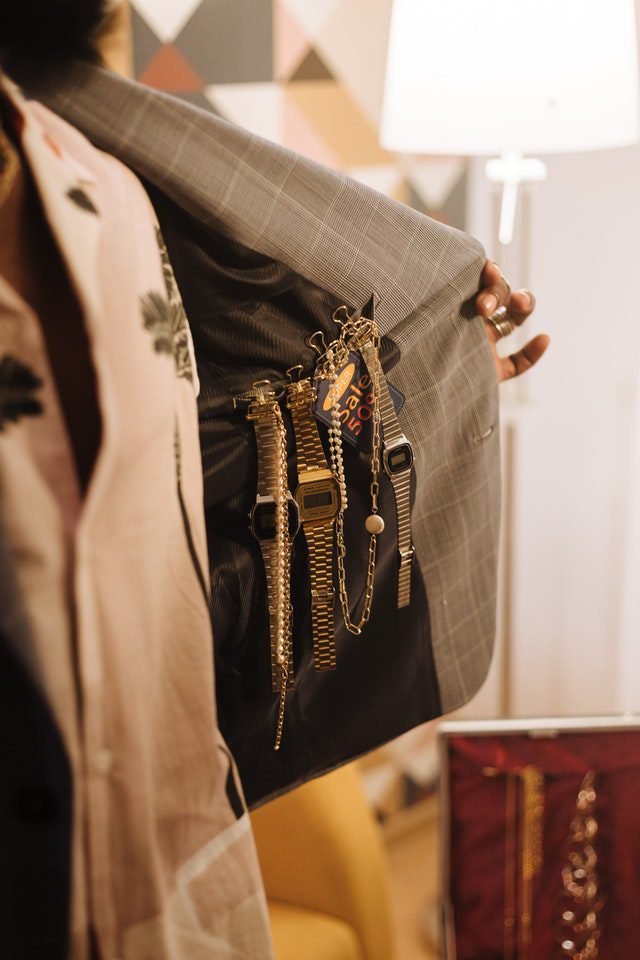Last Updated on August 1, 2023 by
No fashion accessory conveys a sense of the exotic, sophistication, and elegance like a body jewellery masterpiece. Be it a sparkling crystal necklace, an eye-catching belly chain, or a lovely waistband, this body adornment enhances outward beauty and draws attention to the wearer.
In this context, body jewellery offers you an ideal medium for the expression of personal taste and a perfect memento of important life events. Notably, this dual significance explains the enduring relevance of this jewellery category in high-end fashion circles.
In this article, we present you with six body jewellery trends worldwide. Read on to discover the real-world origins and fashion relevance of different types of body jewellery.
Table of Contents
Neck Jewellery
The oldest bead necklace found in a Neolithic burial chamber in the French Alps dates back to 4200BC. Another finding of an ancient metallic Celtic necklace gave circa 1800BC as the body ornament’s probable origin date. More importantly, both necklaces were beautiful and elaborate body adornments masterfully crafted from locally-sourced materials.
In this context, this body adornment has always held a special significance to the owner. This universal truth about the necklace still holds even in today’s tech-centric world. You can now order custom necklace jewellery in any preferred design or style made using a material of your choice.
Waist/Navel Jewellery
Popularly featured in classic adventure movie scenes depicting exotic belly dancing, waist and navel body jewellery has a history of 4,000 years. This body adornment was and still is a distinctive element of traditional Indian dance preceding subsequent adoption by Middle Eastern and Western cultures.
Nowadays, you find many designs and materials for waist and navel jewellery, ranging from elaborate diamond and gold masterpieces to simple silver waist/navel jewellery. Successfully wearing this aesthetic enhancement entails matching waist/navel jewellery with outfits and other body adornments, i.e., bracelets, earrings, necklaces, and beaded ankle bracelets.
Face Jewellery
Several civilizations from around the world have histories featuring the use of face jewellery in social and religious events. For instance, early Alaskan and Australian natives made facial adornments using locally-sourced materials such as feathers, shells, bones, and pebbles.
Later, the advent of metalworking in renaissance Europe, the Middle East, and the Indian subcontinent led to the crafting of exquisite jewelled facial masterpieces from copper, bronze, gold, and silver. In today’s fashion-centric world, you find an extensive array of beautiful and high-end gold or silver face masks.
Bra Jewellery
Unlike all other body adornments in this article, the history of modern-day bra jewellery only goes back as far as Mary Phelps Jacob’s 1914 invention. This early bra featured two handkerchiefs that covered the breasts and joined at the back via a silk ribbon. Despite its rudimentary construction, this body adornment offered comfort and improved the wearer’s appearance.
The later integration of jewellery onto high-end bras in the 70s resulted in body jewellery possessing considerable aesthetic appeal. Nowadays, you find an incredibly vast array of bra jewellery designs and construction. Bra jewellery offerings range from eye-catching diamond-studded brassieres to intricate bra all-metal meshwork of gold and silver.
Thigh Jewellery
As with waist navel jewellery, the origin of thigh jewellery can be traced to India. Since ancient times, this body decoration was an integral component of the eye-catching body ornamentation adorned by traditional Indian belly dancing. Worn on exposed thighs, this body jewellery emphasizes a dancer’s sinuous movements and enhances the performer’s overall beauty.
Nowadays, the vast majority of thigh jewellery serves the primary function of enhancing the aesthetic appeal of outfits. As a result, you not only find exquisite standalone pieces of this body jewellery but also encounter clothing designs that incorporate thigh jewellery.
Ear Jewellery
Last but not least, the interesting history of ear jewellery goes back 7000 years in Asia. Even in those times, this body ornament was an essential beauty-enhancing constituent in the wardrobe of wealthy women. Similarly, ancient Egyptians adorned ear gauges for beauty and as a status symbol representing social-economic well-being.
However, ancient Rome had low regard for ear jewellery and used this body decoration to mark enslaved people. Notably, this negative perception ended with the demise of the Roman Empire. You now find an incredibly vast array of designs, materials, and styles of this popular body jewellery.
Read More: How to Buy Wedding Jewellery Online























